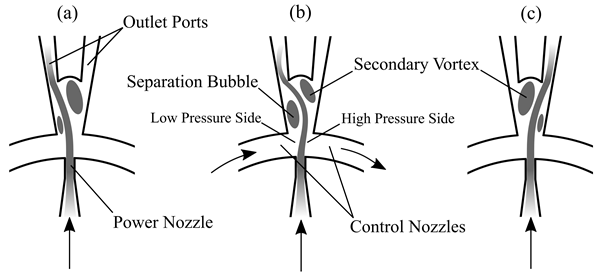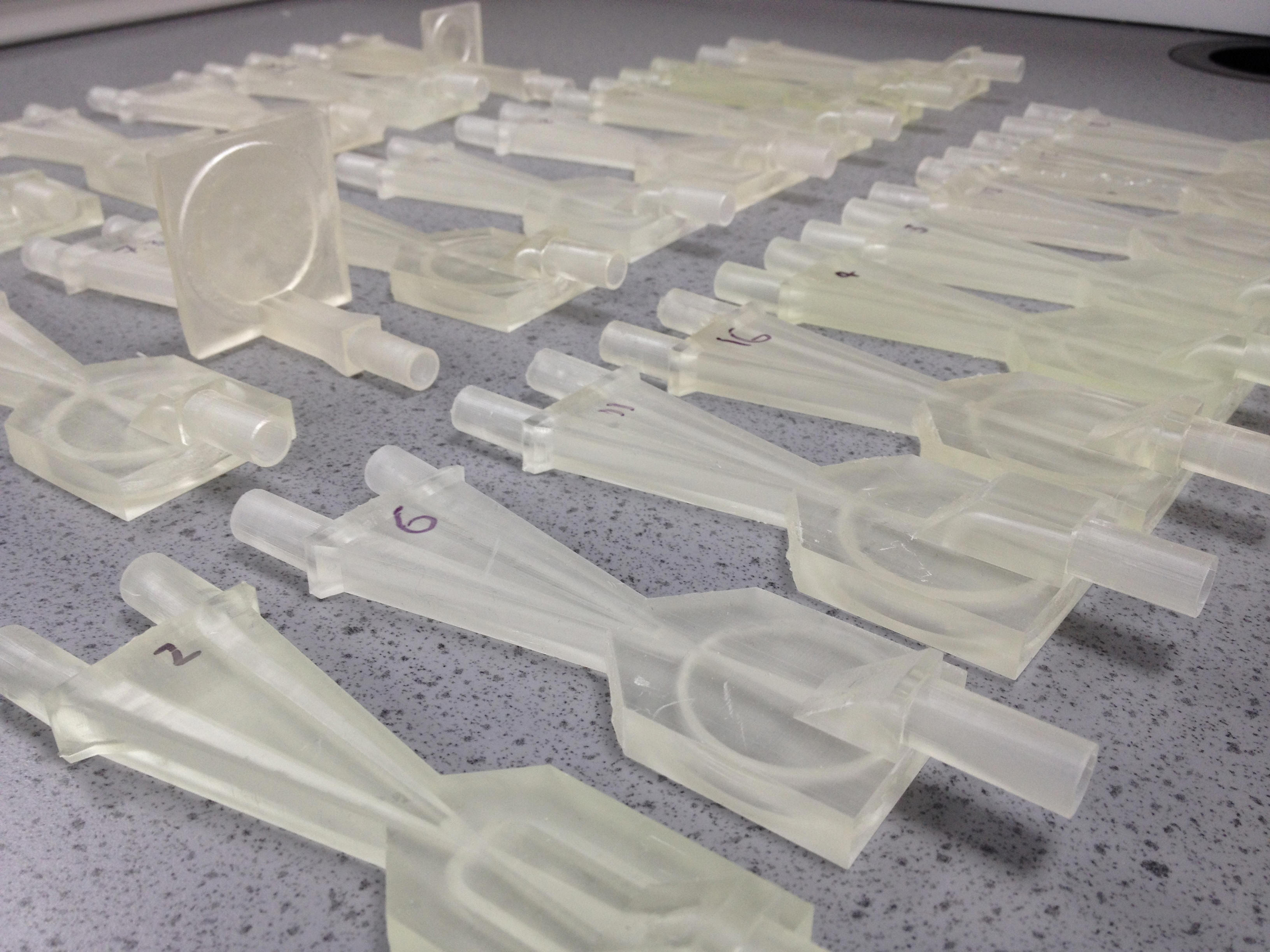|
Previous Project:
Applications of 3D Printed
Fluidic Oscillators
Fluidic oscillators use internal feedback to induce
periodic oscillations. By operating these
devices with multiple outlet channels, periodic
flow switching between the channels leading to
dual stream pulsations can be achieved. This
principle is shown below in Figure 1. In a
previous study [1], the switching frequencies
obtained in single feedback loop oscillators
containing two outlet channels was investigated.
Here the effects of geometry and fluid property
were investigated. It was shown that frequencies
in the range of 2-22 Hz could be produced for
Re = 600-12,000 using water and
water-glycerol mixtures.

Fig. 1 -
Flow switching
mechanism in a single feedback loop bistable
oscillator; (a) wall attachment and formation of
separation bubble, (b) growth of the separation
bubble via flow around the feedback channel, (c)
switching of the main jet to the other outlet
[1]

Fig. 2 - Various 3D
printed oscillator designs (single feedback
loop) used to investigate the effect of geometry
on flow-switching frequency
The aim of the current project is to test these oscillators in a variety
of applications relevant to process
intensification. These areas are:
1. Liquid distribution
2. Plug flow generation (a no-moving-parts OBR)
3. Enhanced heat transfer
4. Enhanced mass transfer
5. Enhanced mixing
6. Further modification of the design (e.g. lower Re designs)
-
McDonough JR, Law R, Kraemer J, Harvey AP.
Effect of geometric parameters on flow-switching
frequencies in 3D printed fluidic oscillators
containing different liquids. Chemical
Engineering Research and Design 117 (2017)
228-239
|